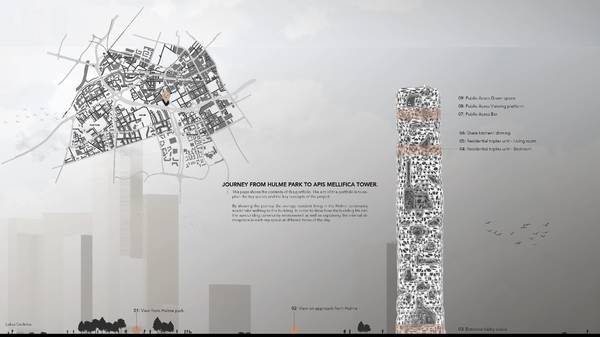The Apis Meliffica tower project is focused on taking nspiration from nature to create dynamic spaces within a high-rise typology.
Following initial experimentation with wax in the generative design stages, the building was devised through a design process using a computer algorithm this simulated the properties of wax in a structured form. The form was then developed further to consider key drivers such as key views and accessibility. It was manually manipulated to incorporate these opportunities and create a building that is both aesthetically linked to the ethos of the city, yet also functional to suit the needs of the user and take advantage of the site opportunities.
The building aims to be inclusive of the surrounding community through the incorporating of public spaces. Rather than being an exclusive elitist tower only for the upper segment, the building encourages interactions between different people, whether it is between residents or people just visiting the tower, the goal is to bring all people together and encourage social activities between people who would not be likely to interact with one another as this allows them to share knowledge and lead to a more balanced well-rounded society.
The building would be constructed using newly emerging robotic technology to create formwork for concrete which would then be manually poured to create the complex geometry. The floor slabs would be pre-fabricated in a warehouse and delivered to the site to both increase the speed of construction as well as allow the cost of the building to be reduced. The glazing would be curved ( on 2 different axes) and match the exterior to create a seamless design. Solar shading would also be applied to the glass through the use of electrochromic technology and allow the user to still retain privacy as well as the ability to shade from the sun seamlessly.
The Apis Mellifica tower concept utilises emerging technology and bio-mimicry to create a tower that acts as a staple in the Manchester skyline for generations to come.


